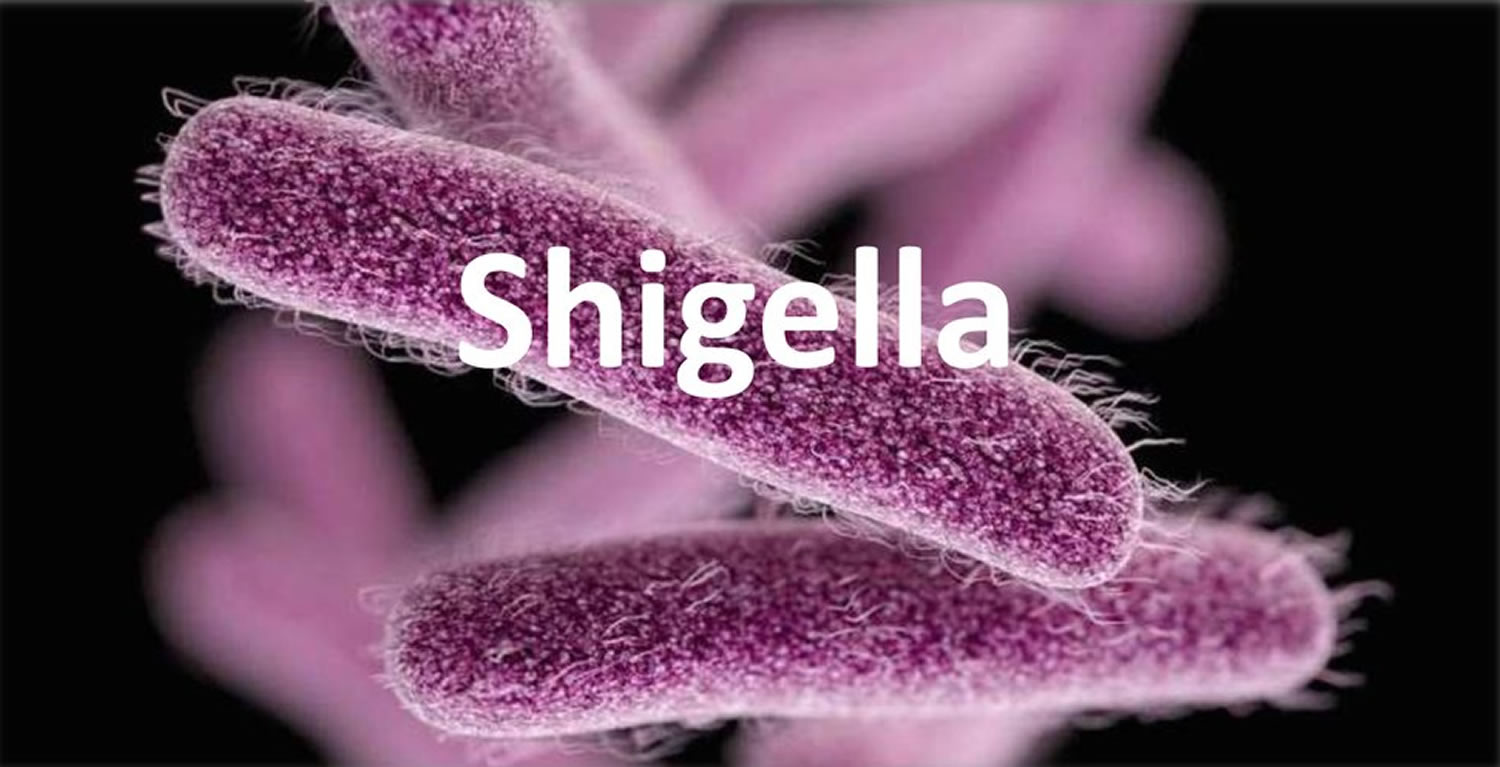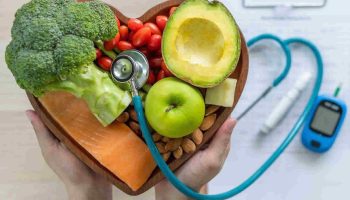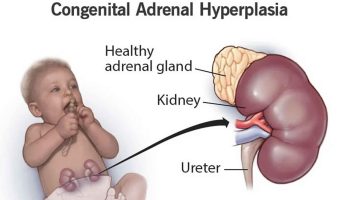What is shigella
Shigellosis is an infection of the lining of the intestines caused by a group of bacteria called Shigella, that causes bacterial dysentery. The Shigella bacteria cause disease by penetrating the lining of the large intestine, causing swelling and sores. Shigellosis causes diarrhea, fever, and stomach cramps 1-2 days after initial exposure to the Shigella bacteria. Shigellosis usually resolves in 5 to 7 days. Some people who are infected may have no symptoms at all, but may still pass the Shigella bacteria to others. The spread of Shigella can be stopped by frequent and careful handwashing with soap and taking other hygiene measures.
Symptoms of shigella infection typically start 1–2 days after exposure to the shigella bacteria and include:
- Diarrhea (sometimes bloody)
- Fever
- Stomach pain
- Feeling the need to pass stool [feces] even when the bowels are empty
For most people, symptoms usually last about 5 to 7 days. In some cases, it may take several months before bowel habits (for example, how often someone passes stool and the consistency of their stool) are entirely normal.
The Shigella bacteria is actually a family of bacteria that can cause diarrhea in humans. They are microscopic living creatures that pass from person to person. Shigella were discovered over 100 years ago by a Japanese scientist named Shiga, for whom they are named. Shigella causes about 500,000 cases of diarrhea in the United States annually 1. There are four different species of Shigella bacteria:
- Shigella sonnei, accounts for over two-thirds of the shigellosis in the United States.
- A second type, Shigella flexneri, accounts for almost all of the rest.
- Shigella boydii
- Shigella dysenteriae
Shigella dysenteriae and Shigella boydii are rare in the United States, though they continue to be important causes of disease in the developing world. Shigella dysenteriae type 1 can be deadly 2.
Figure 1. Shigella
People with diarrhea should contact their healthcare provider if they have any of these symptoms:
- Fever
- Bloody diarrhea
- Severe stomach cramping or tenderness
- Dehydrated
- Feel very sick.
People who are in poor health or who have immune systems weakened from diseases such as HIV/AIDS, or chemoterhapy for cancer, are more likely to get sick for a longer period of time if they have shigella infection. They should contact their healthcare provider if they think they have shigella infection to determine the best course of treatment.
Shigella infection complications
Shigella infection usually clears up without complications, although it may take weeks or months before your bowel habits return to normal.
Complications may include:
- Dehydration. Persistent diarrhea can cause dehydration. Symptoms include lightheadedness, dizziness, lack of tears in children, sunken eyes and dry diapers. Severe dehydration can lead to shock and death.
- Seizures. Some children who run high fevers with a shigella infection have seizures. It’s not known whether the convulsions are a result of the fever or the shigella infection itself. If your child has a seizure, contact your doctor immediately.
- Rectal prolapse. In this condition, straining during bowel movements may cause the mucous membrane or lining of the rectum to move out through the anus.
- Hemolytic uremic syndrome. This rare complication of shigella, more commonly caused by bacteria called E. coli, can lead to a low red blood cell count (hemolytic anemia), low platelet count (thrombocytopenia) and acute kidney failure.
- Toxic megacolon. This rare complication occurs when your colon becomes paralyzed, preventing you from having a bowel movement or passing gas. Signs and symptoms include abdominal pain and swelling, fever, and weakness. If you don’t receive treatment for toxic megacolon, your colon may break open (rupture), causing peritonitis, a life-threatening infection requiring emergency surgery.
- Reactive arthritis. Reactive arthritis develops in response to infection. Signs and symptoms include joint pain and inflammation, usually in the ankles, knees, feet and hips; redness, itching and discharge in one or both eyes (conjunctivitis); and painful urination (urethritis).
Where is shigella found
People who are sick with shigella infection have Shigella bacteria in their stool (poop) while they have diarrhea and for up to a week or two after the diarrhea has gone away. Shigella is very contagious; just a small amount of bacteria can make someone sick.
How do you get shigella
Shigella bacteria are in the stool (feces) of sick people while they have diarrhea and for up to a week or two after the diarrhea has gone away. Shigella bacteria are very contagious; it takes just a small number of Shigella bacteria to make someone sick. People can get shigella infection when they put something in their mouths or swallow something that has come into contact with the stool of someone else who is sick with shigellosis. People could get sick by:
- Getting Shigella bacteria on their hands and then touching your food or mouth. You can get Shigella bacteria on your hands after:
- Touching surfaces contaminated with bacteria from stool from a sick person, such as toys, bathroom fixtures, changing tables or diaper pails
- Changing the diaper of a sick child or caring for a sick person
- Eating food that was prepared by someone who is sick with shigella infection
- Swallowing recreational water (for example, lake or river water) while swimming or drinking water that is contaminated with stool (poop) containing the shigella bacteria
- Having exposure to stool during sexual contact with someone who is sick or recently (several weeks) recovered from shigella infection.
I was diagnosed with shigella infection. What can I do to avoid giving it to other people?
- Wash your hands carefully and frequently with soap and water, especially after using the bathroom.
- Do not prepare food for others while you are sick. After you get better, wash your hands carefully with soap and water before preparing food for others.
- Stay home from childcare, school and food service facilities while sick. Your local health department may have a policy on when to return to childcare or school. Refer to your local health department website for more information.
- Avoid swimming until you have fully recovered.
- Wait to have sex (vaginal, anal, and oral) for one week after you no longer have diarrhea. Because Shigella germs may be in stool for several weeks, follow safe sexual practices, or ideally avoid having sex, for several weeks after you have recovered.
My child was diagnosed with shigellosis. How can I keep others from catching it?
- Supervise handwashing of toddlers and small children after they use the bathroom. Wash your hands and your infant’s hands with soap and water after diaper changes.
- Throw away soiled diapers in a covered, lined garbage can. Clean diaper changing areas after using them. (Safe & Healthy Diapering in the Home)
- Keep your child out of childcare and group play settings while sick with diarrhea, and follow the guidance of your local health department about returning your child to their childcare facility.
- Avoid taking your child swimming or to group water play venues until after they no longer have diarrhea.
- Have children and staff shower with soap before swimming.
- If a child is too young to shower independently, have staff wash the child, particularly the rear end, with soap and water.
- Have children and staff shower with soap before swimming.
- Take frequent bathroom breaks or check their diapers often.
- Change diapers in a diaper-changing area or bathroom and not by the water.
- Discourage children from getting the water in their mouths and swallowing it.
Who is most likely to get shigellosis?
- Young children are the most likely to get shigellosis, but people of all ages are affected 3. Many outbreaks are related to childcare settings and schools, and illness commonly spreads from young children to their family members and others in their communities because it is so contagious.
- Travelers to developing countries may be more likely to get shigellosis, and to become infected with strains of Shigella bacteria that are resistant to important antibiotics 2-3. Travelers may be exposed through contaminated food, water (both drinking and recreational water), or surfaces. Travelers can protect themselves by strictly following food and water precautions, and washing hands with soap frequently.
- Gay and bisexual men and other men who have sex with men are more likely to acquire shigellosis than the general adult population 4. Shigella passes from feces or soiled fingers of one person to the mouth of another person, which can happen during sexual activity. Many shigellosis outbreaks among men who have sex with men have been reported in the United States, Canada, Japan, and Europe since 1999 4.
- People who have weakened immune systems due to illness (such as HIV) or medical treatment (such as chemotherapy for cancer) can get a more serious illness. A severe shigellosis may involve the infection spreading into the blood, which can be life-threatening 5.
- Large outbreaks of shigella infection often start in childcare settings and spread among small social groups such as in traditionally observant Jewish communities 6. Similar outbreaks could occur among any race, ethnicity or community social circle because Shigella germs can spread easily from one person to another.
Shigella transmission and infections among Gay & Bisexual Men
- Men who have sex with men are more likely to acquire shigella infection than the general adult population 7.
- Many shigella infection outbreaks among men who have sex with men have been reported in the United States, Australia, Canada, Japan, and Europe since 1999 2-7, 10-12.
- Men who have sex with men are more likely than others to get infected with Shigella that is resistant to antibiotics commonly used to treat adults who have shigella infection 8. Therefore, men who have sex with men who get shigella infection may need to see their healthcare providers repeatedly before receiving treatments that will work. Additionally, they may require injectable antibiotics rather than antibiotics that can be taken by mouth.
- HIV-infected persons can have more severe and prolonged shigella infection, including having the infection spread into the blood, which can be life-threatening 9.
I was diagnosed with shigella infection. What can I do to avoid giving it to other people?
- Wash your hands with soap after going to the bathroom.
- Wait to have sex until you no longer have diarrhea (ideally, wait for a few weeks after that because you can have Shigella bacteria in your stool for weeks after you recover). When you start having sex again, wash your body and hands before and after sex. During oral-anal sex (anilingus or “rimming”), use barriers, such as condoms, natural rubber latex sheets, dental dams, or cut-open non-lubricated condoms between your rectum and your partner’s mouth. Use condoms during anal sex.
- Do not prepare food for others while you are sick. After you get better, wash your hands carefully with soap before preparing food for others.
- For those who work in healthcare, food service, or childcare, follow your local health department’s guidance about exclusion from work while ill and returning to work after you have recovered.
How can I reduce my risk of getting shigella infection?
- Meticulously washing your hands with soap during key times:
- Before eating
- After changing a diaper
- After helping to clean another person who has defecated (pooped)
- Avoid sexual activity with those who have diarrhea or who recently recovered from diarrhea.
- Reduce fecal-oral exposure during sex:
- Wash your genitals, anus, and hands before and after sexual activity.
- Use barriers like condoms or dental dams during oral sex and oral-anal sex and latex gloves during anal fingering or fisting.
- Use condoms during anal and vaginal sex to prevent other sexually transmitted infections.
- Avoid swallowing recreational (for example, lake or river water while swimming) or drinking water that was contaminated by infected fecal matter.
- When traveling internationally, follow food and water precautions and wash hands with soap frequently.
Shigella causes
Shigella infection occurs when you accidentally swallow shigella bacteria. This can happen when you:
- Touch your mouth. If you don’t wash your hands well after changing the diaper of a child who has shigella infection, you may become infected yourself. Direct person-to-person contact is the most common way the disease is spread.
- Eat contaminated food. Infected people who handle food can transmit the bacteria to people who eat the food. Food can also become contaminated if it grows in a field that contains sewage.
- Swallow contaminated water. Water may become contaminated either from sewage or from a person with shigella infection swimming in it.
Risk factors for Shigella infection
- Being a toddler. Shigella infection is most common in children between the ages of 2 and 4.
- Living in group housing or participating in group activities. Close contact with other people spreads the bacteria from person to person. Shigella outbreaks are more common in child care centers, community wading pools, nursing homes, jails and military barracks.
- Living or traveling in areas that lack sanitation. People who live or travel in developing countries are more likely to contract shigella infection.
- Being a sexually active gay male. Men who have sex with men are at higher risk because of direct or indirect oral-anal contact.
Shigella prevention
You can reduce your chance of getting sick from Shigella by taking these steps:
- Carefully washing your hands with soap and water during key times:
- Before preparing food and eating.
- After changing a diaper or helping to clean another person who has defecated (pooped).
- If you care for a child in diapers who has shigellosis, promptly throw away the soiled diapers in a covered, lined garbage can. Wash your hands and the child’s hands carefully with soap and water right after changing the diapers. Clean up any leaks or spills of diaper contents immediately.
- Avoid swallowing water from ponds, lakes, or untreated swimming pools.
- When traveling internationally, stick to safe eating and drinking habits, and wash hands often with soap and water.
- Avoid having sex (vaginal, anal, and oral) for one week after your partner recovers from diarrhea. Because Shigella bacteria may be in stool for several weeks, follow safe sexual practices, or ideally avoid having sex, for several weeks after your partner has recovered.
Safe and Healthy Diapering in the Home
Protect yourself and your children from germs by following these diapering steps.
1. Clean Child
Keep a hand on the child for safety at all times.
- Place the child on diapering surface and unfasten diaper.
- Clean the child’s diaper area with fresh baby wipes. Remember to always wipe from front to back!
- Keep dirty diaper/clothing away from any surfaces that cannot be easily cleaned.
2. Remove Dirty Diaper
- If child is using cloth diapers:
- Place used disposable baby wipes in a plastic-lined, lidded trash can or place cloth wipes in a cloth diaper pail.
- If child has pooped, fold diaper closed and set aside for now, out of child’s reach.
- If child has not pooped, place the dirty diaper in a cloth diaper pail.
- If child is using disposable diapers:
- Set the used baby wipes in the dirty diaper.
- Place the dirty diaper and used baby wipes in a plastic-lined, lidded trash can.
3. Replace Diaper
- Slide a fresh diaper under the child.
- Apply diaper cream, if needed.
- Fasten the diaper and dress the child.
4. Wash Child’s Hands
- Wash child’s hands with soap and water and place him or her in a safe, supervised area.
5. Clean Diapering Surface (Especially if there were any spills or leaks of diaper contents)
- If diapering surface is waterproof, wipe up any visible soil with damp paper towels or a baby wipe. Then scrub with a disinfectant spray or wipe and allow surface to air dry.
- If diapering surface has a fabric cover, remove the soiled cover and replace it with a fresh one.
6. Flush Poop (if using cloth diapers)
- If the child had pooped into the diaper, discard poop in toilet. Take care not to touch any other surfaces.
- Place the dirty diaper in the trash can or cloth diaper pail.
7. Wash Your Hands
- Wash your hands thoroughly with soap and water.
Figure 2. Healthy Diapering in the Home
Food and Water Safety for Travelers
Contaminated food or drinks can cause travelers’ diarrhea and other diseases. Travelers to developing countries are especially at risk. Reduce your risk by sticking to safe eating and drinking habits.
Risky vs. Safer: Food and Drink Choices while Traveling
Risky choices:
- Uncooked vegetables such as salads and salsa
- Food from street vendors
- Raw or undercooked (rare) meat or fish
- Raw or runny eggs
- Fountain drinks
- Tap or well water
- Flavored ice or ice pops
- Bushmeat (monkeys, bats, or other wild game)
- Ice or drinks (such as juice) made with tap or well water
- Food served at room temperature (avoid buffets where food has been sitting)
- Flavored ice pops
- Unpasteurized dairy products
- Food from street vendors
- Raw or soft-cooked (runny) eggs
- Unwashed or unpeeled raw fruits and vegetables
Safer choices:
- Fruit and vegetables YOU have washed in clean water or peeled
- Milk and dairy products ONLY if pasteurized
- Food that is cooked and served hot
- Hot coffee or tea
- Water that you know has been disinfected (boiled, filtered, treated)
- Ice made with bottled or disinfected water
- Water, sodas, or sports drinks from a sealed can or bottle (carbonated is safer)
Food
Usually Safe
Hot food
High heat kills the germs that cause travelers’ diarrhea, so food that is cooked thoroughly is usually safe as long as it is served steaming hot. Be careful of food that is cooked and allowed to sit at warm or room temperatures, such as on a buffet. It could become contaminated again.
Dry or packaged food
Most germs require moisture to grow, so food that is dry, such as bread or potato chips, is usually safe. Additionally, food from factory-sealed containers, such as canned tuna or packaged crackers, is safe as long as it was not opened and handled by another person.
Can Be Risky
Raw food
Raw food should generally be avoided. Raw fruits or vegetables may be safe if you can peel them yourself or wash them in safe (bottled or disinfected) water. Steer clear of platters of cut-up fruit or vegetables. (Did you see the hands that cut them? Can you be sure those hands were clean?) Salads are especially problematic because shredded or finely cut vegetables offer a lot of surface area for germs to grow on. Also avoid fresh salsas or other condiments made from raw fruits or vegetables. Raw meat or seafood may contain germs; this includes raw meat that is “cooked” with citrus juice, vinegar, or other acidic liquid (such as ceviche, a dish of raw seafood marinated in citrus juice).
Street food
Street vendors in developing countries may not be held to the same hygiene standards as restaurants (which may be low to begin with), so eat food from street vendors with caution. If you choose to eat street food, apply the same rules as to other food; for example, if you watch something come straight off the grill (cooked and steaming hot), it’s more likely to be safe.
Bushmeat
Bushmeat refers to local wild game, generally animals not typically eaten in the United States, such as bats, monkeys, or rodents. Bushmeat can be a source of animal-origin diseases, such as Ebola or SARS, and is best avoided.
Drinks
Usually Safe
Bottled or canned drinks
Drinks from factory-sealed bottles or cans are safe; however, dishonest vendors in some countries may sell tap water in bottles that are “sealed” with a drop of glue to mimic the factory seal. Carbonated drinks, such as sodas or sparkling water, are safest since the bubbles indicate that the bottle was sealed at the factory. If drinking directly from a can, wipe off the lip of the can before your mouth comes into contact with it.
Hot drinks
Hot coffee or tea should be safe if it is served steaming hot. It’s okay to let it cool before you drink it, but be wary of coffee or tea that is served only warm or at room temperature. Be careful about adding things that may be contaminated (cream, lemon) to your hot drinks (sugar should be fine; see “Dry food” above).
Milk
Pasteurized milk from a sealed bottle should be okay, but watch out for milk in open containers (such as pitchers) that may have been sitting at room temperature. This includes the cream you put in your coffee or tea. People who are pregnant or have weakened immune systems should stay away from unpasteurized milk or other dairy products (cheese, yogurt).
Alcohol
The alcohol content of most liquors is sufficient to kill germs; however, stick to the guidelines above when choosing mixers and avoid drinks “on the rocks” (see “Ice” below). The alcohol content of beer and wine is probably not high enough to kill germs, but if it came from a sealed bottle or can, it should be okay.
Can Be Risky
Tap water
In most developing countries, tap water should probably not be drunk, even in cities. This includes swallowing water when showering or brushing your teeth. In some areas, it may be advisable to brush your teeth with bottled water. Tap water can be disinfected by boiling, filtering, or chemically treating it, for example with chlorine.
Fountain drinks
Sodas from a fountain are made by carbonating water and mixing it with flavored syrup. Since the water most likely came from the tap, these sodas are best avoided. Similarly, juice from a fountain is most likely juice concentrate mixed with tap water and should be avoided.
Ice
Avoid ice in developing countries; it was likely made with tap water.
Freshly squeezed juice
If you washed the fruit in safe water and squeezed the juice yourself, drink up. Juice that was squeezed by unknown hands may be risky. The same goes for ice pops and other treats that are made from freshly squeezed juice.
Shigella symptoms
People who are sick from Shigella infection usually start experiencing symptoms 1 to 2 days after contact with the germ. Symptoms of shigella infection include:
- Diarrhea (sometimes bloody)
- Fever
- Stomach pain
- Feeling the need to pass stool [poop] even when the bowels are empty
Some people with shigella infection will not have any symptoms.
Symptoms usually last 5 to 7 days, but some people may experience symptoms anywhere from a few days to 4 or more weeks. In some cases, it may take several months before bowel habits (for example, how often someone passes stool and the consistency of their stool) are entirely normal.
Rare Symptoms from shigella infections
Post-infectious arthritis
About 2% 10 of people who are infected with the type of Shigella called Shigella flexneri will experience post-infectious arthritis, which causes joint pains, eye irritation, and painful urination. The syndrome only occurs in people who have specific genetic makeup that puts them at risk 11. It can last for months or years, and can lead to chronic arthritis. Post-infectious arthritis usually does not occur in people who get sick from the other types of Shigella, called Shigella sonnei 12, Shigella boydii, or Shigella dystenteriae 13.
Bloodstream infections-Rare
People with shigella infection can get bloodstream infections caused by Shigella germs or by other germs in the gut that get into the bloodstream when shigella infection damages intestinal linings. Bloodstream infections are most common among patients with weakened immune systems, such as those with HIV, cancer, or severe malnutrition 14.
Seizures
A few young children with shigella infection have had generalized seizures, but the seizures usually go away without treatment. Children with shigella infection who experience seizures typically have a high fever or abnormal blood electrolytes (salts). However, healthcare professionals do not know why the seizures occur 15.
Hemolytic-uremic syndrome
Hemolytic-uremic syndrome occurs when bacteria enter the digestive system and produce a toxin that destroys red blood cells. Patients with hemolytic-uremic syndrome often have bloody diarrhea. The syndrome can be deadly. In patients with shigella infection, hemolytic-uremic syndrome is associated with Shiga toxin-producing Shigella, most often Shigella dystenteriae 16.
Shigella diagnosis
Many kinds of germs can cause diarrhea. Knowing which germ is causing an illness is important to help guide appropriate treatment. Healthcare providers can order laboratory tests to identify Shigella bacteria in the stool of an infected person.
Shigella treatment
People who have shigella infection usually get better without antibiotic treatment in 5 to 7 days. People with mild shigella infection may need only fluids and rest. Bismuth subsalicylate (for example, Pepto-Bismol) may be helpful 17, but people sick with shigella infection should not use medications that cause the gut to slow down and interfere with the way the body digests food, such as loperamide (for example, Imodium) or diphenoxylate with atropine (for example, Lomotil) 18.
Healthcare providers may prescribe antibiotics for people with severe cases of shigella infection to help them get better faster. However, some antibiotics are not effective against certain types of Shigella. Healthcare providers can order laboratory tests to determine which antibiotics are likely to work. Tell your healthcare provider if you do not get better within a couple of days after starting antibiotics. They can do more tests to learn whether your type of Shigella bacteria can be treated effectively with the antibiotic you are taking. If not, your doctor may prescribe another type of antibiotic.
Antibiotics
For severe shigella infection, antibiotics may shorten the duration of the illness. However, some shigella bacteria have become drug resistant. So it’s better not to take antibiotics unless your shigella infection is severe.
Antibiotics may also be necessary for infants, older adults and people who have HIV infection, as well as in situations where there’s a high risk of spreading the disease.
Fluid and salt replacement
For generally healthy adults, drinking water may be enough to counteract the dehydrating effects of diarrhea.
Children may benefit from an oral rehydration solution, such as Pedialyte, available in drugstores. Many pharmacies carry their own brands.
Children and adults who are severely dehydrated need treatment in a hospital emergency room, where they can receive salts and fluids through a vein (intravenously), rather than by mouth. Intravenous hydration provides the body with water and essential nutrients much more quickly than oral solutions do.
References- Scallan E, Hoekstra RM, Angulo FJ, Tauxe RV, Widdowson MA, Roy SL, Jones JL, Griffin PM. Foodborne illness acquired in the United States–major pathogens. Emerg Infect Dis. 2011;17(1):7-15.
- American Academy of Pediatrics. Red Book: Report of the Committee on Infectious Diseases. 2012. 645-647.
- Adams DA, Thomas KR, Jajosky RA, Foster L, Baroi G, Sharp P, Onweh DH, Schley AW, Anderson WJ, Nationally Notifiable Infectious Conditions Group. Summary of Notifiable Infectious Diseases and Conditions – United States, 2015. MMWR Morb Mortal Wkly Rep. 2017;64(53):1-143.
- Heiman KE, Karlsson M, Grass J, Howie B, Kirkcaldy RD, Mahon B, Brooks JT, Bowen A. Notes from the field: Shigella with decreased susceptibility to azithromycin among men who have sex with men – United States, 2002-2013. MMWR Morb Mortal Wkly Rep. 2014;63(6):132-3. https://www.cdc.gov/mmwr/preview/mmwrhtml/mm6306a4.htm
- Guidelines for the prevention and treatment of opportunistic infections in HIV-infected adults and adolescents: recommendations from the Centers for Disease Control and Prevention, the National Institutes of Health, and the HIV Medicine Association of the Infectious Diseases Society of America. Panel on Opportunistic Infections in HIV-Infected Adults and Adolescents. 2015. https://aidsinfo.nih.gov/contentfiles/lvguidelines/adult_oi.pdf
- De Schrijver K, Bertrand S, Gutierrez Garitano I, Van den Branden D, Van Schaeren J. Outbreak of Shigella sonnei infections in the Orthodox Jewish community of Antwerp, Belgium, April to August 2008. Euro Surveill. 2011;16(14). http://www.eurosurveillance.org/content/10.2807/ese.16.14.19838-en
- Aragon TJ, Vugia DJ, Shallow S, Samuel MC, Reingold A, Angulo FJ, Bradford WZ. Case-control study of shigellosis in San Francisco: the role of sexual transmission and HIV infection. Clin Infect Dis. 2007;44(3):327-34. https://academic.oup.com/cid/article/44/3/327/311976
- Gaudreau C, Barkati S, Leduc JM, Pilon PA, Favreau J, Bekal S. Shigella spp. with reduced azithromycin susceptibility, Quebec, Canada, 2012-2013. Emerg Infect Dis. 2014;20(5):854-6. https://www.cdc.gov/shigella/msm.html
- HHS. Guidelines for the prevention and treatment of opportunistic infections in HIV-infected adults and adolescents: recommendations from the Centers for Disease Control and Prevention, the National Institutes of Health, and the HIV Medicine Association of the Infectious Diseases Society of America.[PDF – 425 pages] Panel on Opportunistic Infections in HIV-Infected Adults and Adolescents. 2015. https://aidsinfo.nih.gov/contentfiles/lvguidelines/adult_oi.pdf
- Simon DG, Kaslow RA, Rosenbaum J, Kaye RL, Calin A. Reiter’s syndrome following epidemic shigellosis. J Rheumatol. 1981;8(6):969-73.
- Hannu T, Mattila L, Siitonen A, Leirisalo-Repo M. Reactive arthritis attributable to Shigella infection: a clinical and epidemiological nationwide study. Ann Rheum Dis. 2005;64(4):594-8. http://ard.bmj.com/content/64/4/594.long
- Chen M, Delpech V, O’Sullivan B, Donovan B. Reactive arthritis associated with Shigella sonnei. Int J STD AIDS. 2002;13(2):135-6. http://journals.sagepub.com/doi/abs/10.1258/0956462021924640
- Mazumder RN, Salam MA, Ali M, Bhattacharya MK. Reactive arthritis associated with Shigella dysenteriae type 1 infection. J Diarrhoeal Dis Res. 1997;15(1):21-4. http://www.jstor.org/stable/23498594
- Appannanavar SB, Goyal K, Garg R, Ray P, Rathi M, Taneja N. Shigellemia in a post renal transplant patient: a case report and literature review. J Infect Dev Ctries. 2014;8(2):237-9. https://jidc.org/index.php/journal/article/view/24518636/1009
- Shamsizadeh A, Nikfar R, Bavarsadian E. Neurological manifestations of shigellosis in children in southwestern Iran. Pediatr Int. 2012;54(1):127-30. http://onlinelibrary.wiley.com/wol1/doi/10.1111/j.1442-200X.2011.03522.x/full
- Butler T. Haemolytic uraemic syndrome during shigellosis. Trans R Soc Trop Med Hyg. 2012;106(7):395-9. trstmh.oxfordjournals.org/content/106/7/395.long
- Pathophysiology of gastrointestinal infections: the role of bismuth subsalicylate. Scottsdale, Arizona, 11-14 February 1988. Proceedings. Rev Infect Dis. 1990;12 Suppl 1:S1-119.
- DuPont HL, Hornick RB. Adverse effect of lomotil therapy in shigellosis. 1973;226(13):1525-8. https://jamanetwork.com/journals/jama/article-abstract/352180







